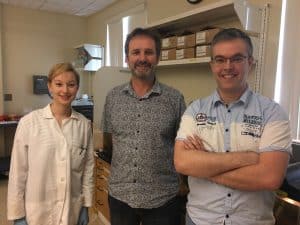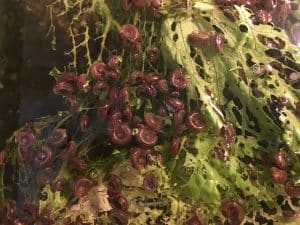Podcast: Play in new window | Download (Duration: 10:30 — 14.8MB)
Subscribe: Apple Podcasts | TuneIn | RSS | More

Schistosomiasis is an important tropical disease caused by schistosome trematodes (a parasitic blood fluke). Those parasites are found in South America and the Caribbean, sub-Saharan Africa, the Middle East, and Southeast Asia. An estimated 200 million people worldwide are infected with schistosomes and 200,000 people die each year. Schistosomiasis is a waterborne disease. Infected freshwater snails release larvae (cercariae) which can infect humans during their water related activities.
Only one drug – praziquantel – is currently available to treat patients but drug resistance starts to emerge. Vaccines have been designed in laboratory but have never conferred decent level of protection to people in the field. Therefore new approaches are needed to identify drug targets, understand drug resistance, predict vaccine efficacy by understanding parasite population diversity and identify potential vaccine candidates.

The Texas Biomed schistosomiasis lab has pioneered the use of genetic crosses between schistosomes in the laboratory for identifying the genetic basis of biomedically important parasite traits. Scientists have used this approach, together with exome sequencing, to identify the precise mutations that underlie oxamniquine resistance, and are now applying the same approach to understand praziquantel resistance, host specificity, parasite virulence, and multiple other important biomedical traits.
